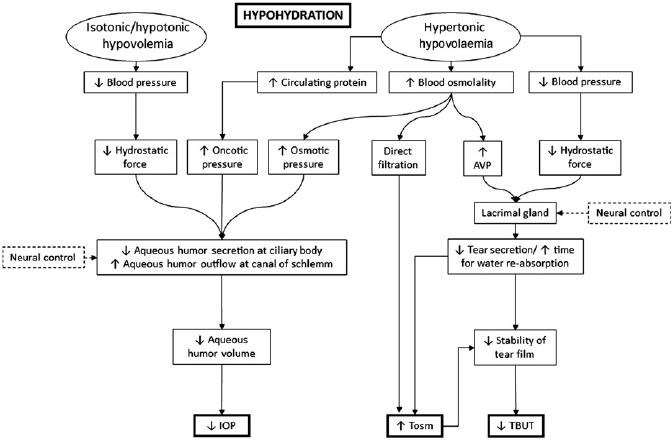
Hyphohydration
Hypohydration is defined as a body water deficit greater than normal daily fluctuation. A range of body measurements can be used to assess changes in hydration status; however, each has its own set of limitations. Changes in body mass are the most sensitive and straightforward way to assess acute changes in body water for all types of dehydration due to low measurement variability. Body mass measurements, of course, rely on subjects maintaining an energy balance and keeping meticulous records of their intake and output. Body water deficits >2% of body mass surpass 2 standard deviations in normal body mass variability and constitute an approximate threshold where compensatory fluid regulation responses occur, based on plasma volume decreases and plasma osmolality increases. As a result, we define hypohydration as a loss of more than 2% of body mass due to water shortages, as this has a greater than 95% likelihood of surpassing typical daily body water fluctuations.

Fig.1. Possible Pathways by which Hypohydration may alter Intraocular Pressure (ResearchGate.com)
Sweat-induced hypohydration causes plasma volume to drop and plasma osmotic pressure to rise in proportion to the loss of total body water. Absolute hypovolemia is defined as a decrease in plasma volume with the same vascular space size. Because sweat requires fluid, plasma volume falls, and osmolality rises because sweat is hypotonic in comparison to plasma. The major ion responsible for the increased plasma osmolality is sodium. Plasma hyperosmolality causes fluid to move from the intracellular to the extracellular region, allowing hypohydrated people to maintain their plasma volume. Diuretics can be used to simulate the type of water and solute loss seen in cold and high-altitude settings on the ground. Diuretic-induced hypohydration causes iso-osmotic hypovolemia, with a considerably higher ratio of plasma to body water loss than exercise or heat-induced hypohydration.





